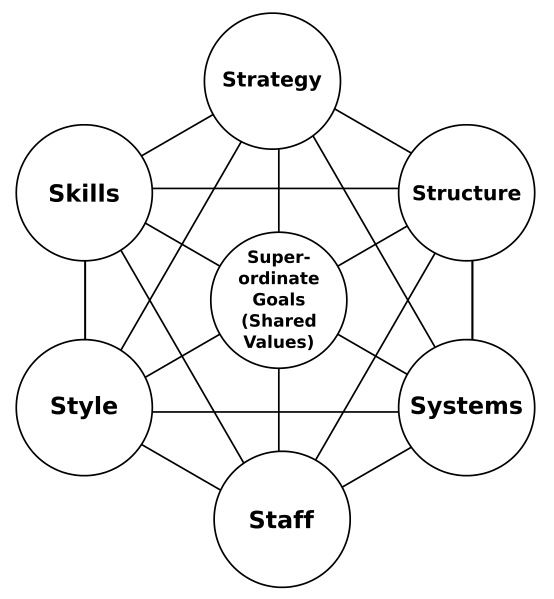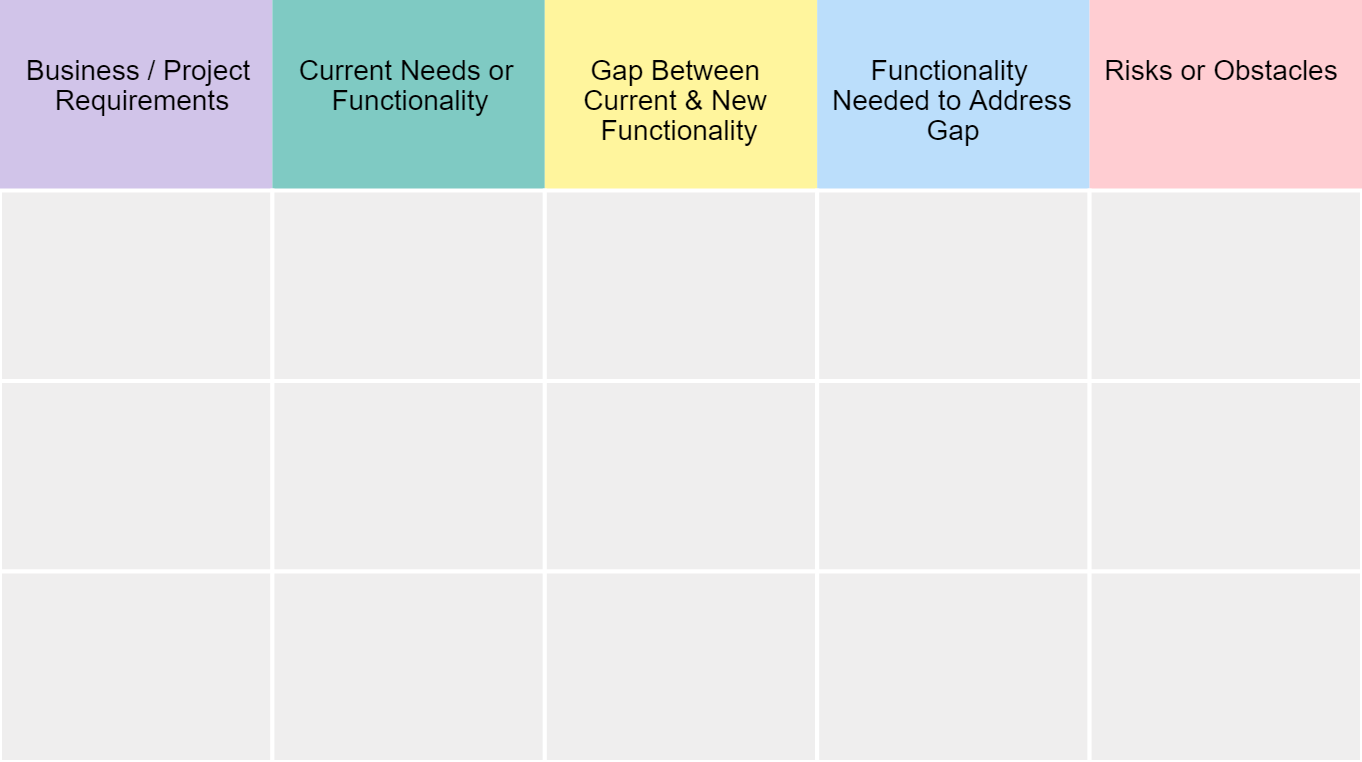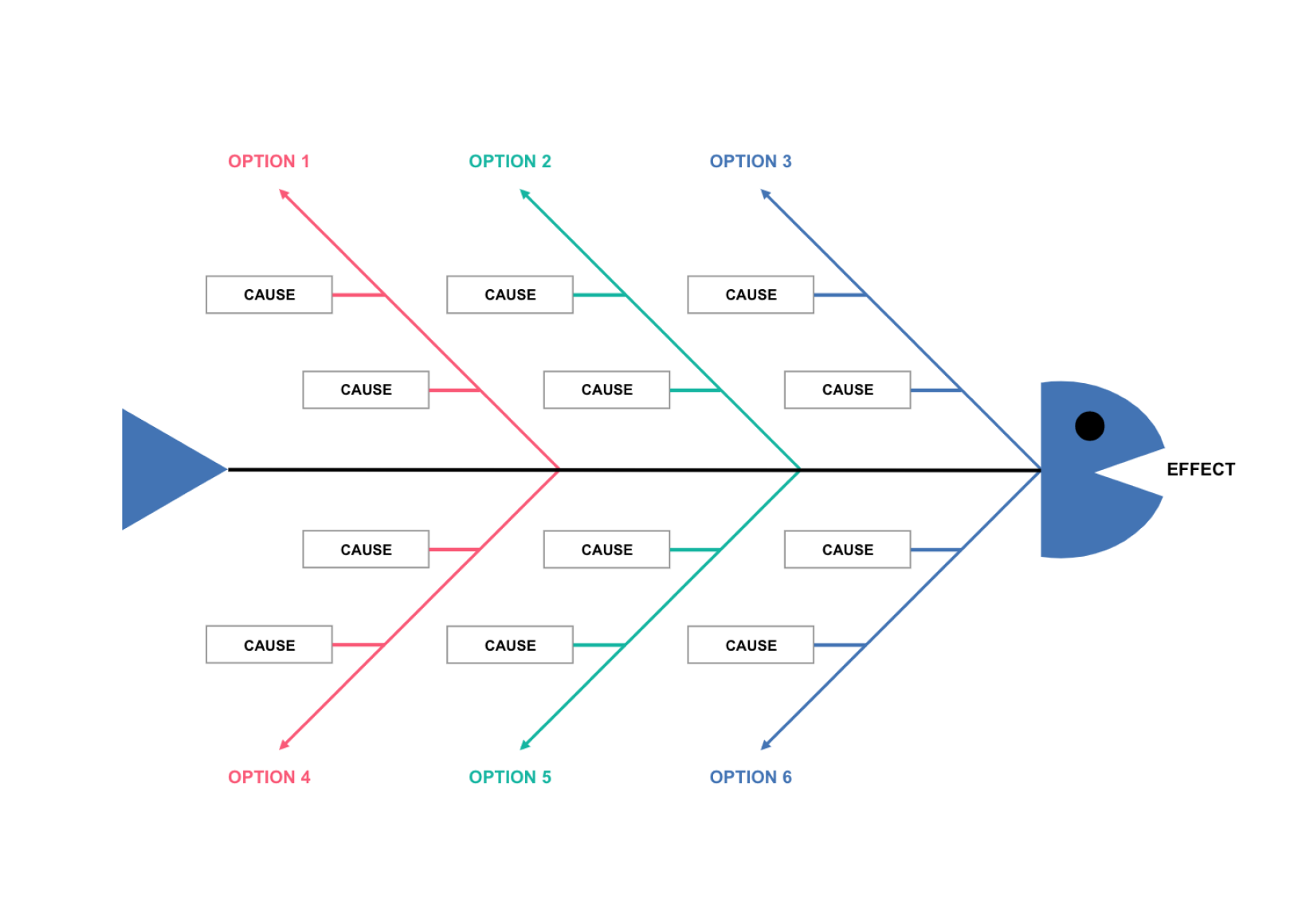These gap analysis tools will help you identify every opportunity
Georgina Guthrie
January 02, 2022
Businesses that are continually growing and improving all have something in common: they aren’t afraid to figure out where they’re falling short. Many organizations reach a level of efficiency that feels comfortable — and then stop making any effort to innovate. They decide everything is working well enough, so there’s no urgency to address ongoing hurdles. Conducting a gap analysis on a regular basis can help project managers overcome this organizational complacency and foster more collaborative teams.
What is gap analysis?
A gap analysis is a way for project managers to measure where they are against where they’d like to be. The ‘gap’ is the difference between these two markers, and it’s the project manager’s job to close it.
A gap analysis could cover a huge range of variables, from targets and financial performance to technical skills, customer satisfaction, energy conservation, and more. A complex analysis could even focus on several variables simultaneously.
A well-conducted gap analysis does two things. Firstly, it reveals opportunities to use resources more effectively, which benefits that all-important bottom line. Secondly, it helps the PM define measurable targets and assign jobs and resources accordingly. Pretty handy, right? So, how can you make this helpful technique work for you? Read on!
How to do a gap analysis
Pick a focus area and assess
First, you need to pick an area to focus on. Then, you’ll need to honestly assess what your team is currently doing and whether or not you’re consistently hitting your goals. As a team, you should develop a list of questions you intend to answer. For example:
- Are you living up to the company mission statement?
- Do clients have good things to say about your organization?
- Does the team dynamic facilitate communication and growth?
- How often do projects involve backtracking, wasted resources, or unexpected costs?
As you go through your list of questions, you will discover potential areas of improvement. This is not the time to sugarcoat things — the more transparent you are, the more you’ll get out of your analysis.
How and what you measure depends on your industry, but a typical analysis includes factors such as time, money, client satisfaction, and resources. Be sure to consult people in various roles and departments, as their different experiences on the job could offer valuable insight.
Work out your goals
Assess how you can improve, and then outline a plan to make it happen. Be realistic about what you can achieve, but also be aspirational.
In terms of performance, where would you like to be? What changes will help everyone do their jobs better? In what ways are you overlooking opportunities to make the customer experience more satisfying or streamlined? What do you need to do to reach that point? And once you’re there, how will you measure and prove it?
Bridge the gap
So, you have an idea of where you are and where you want to go. Next, you need to identify your gaps and work out what you need to bridge them. Is there anything stopping you from reaching your goals? What tools and resources will you need? Do you require additional investment and buy-in from the board?
Consider how you plan to present your findings. As a project manager, you have to back up new objectives by showing decision-makers what’s at stake. This could involve a project proposal, a whitepaper, client testimonials, industry reports, or all of the above. Gather whatever evidence is necessary to show stakeholders that ignoring the ‘gap’ will have a long-term impact on the company.
Watch out for blue-sky thinking
Optimism is a lovely trait, but it pays to have two feet firmly on the ground when it comes to projects. Prepare for roadblocks and factor them into your plan of action, both in terms of time and cost.
With this in mind, it’s a great idea to incorporate some process improvement tools into your project before you begin. Creating a process diagram not only helps you organize your thoughts but also shows potential investors and colleagues the issues you’re facing and how you plan to address them.
Best tools for gap analysis
The type of gap analysis you use depends on whether you’re trying to solve a problem or innovate. Some models are helpful for implementing a strategy in both cases, while others are best for simply identifying a gap. Here are a few of our favorite methods of gap analysis to get you started.
SWOT analysis
SWOT stands for strengths, weaknesses, opportunities, threats. A SWOT diagram is an incredibly popular business tool designed to help you analyze your position in the market and strategically shape your decision-making.
The goal is to identify internal and external factors that positively or negatively impact your business growth. By analyzing these factors, you can try to mitigate weaknesses and threats and leverage your strengths to pursue good opportunities.
First, you can use a SWOT analysis to assess the state of your current operations. Then later, you can use it to evaluate and refine your proposal(s).

Learn more about how a SWOT chart can help you here.
PERT charts
The Program, Evaluation, and Review Technique (PERT for short) is a project management method that itemizes the separate tasks that make up a project, then helps you analyze the time it will take to complete each one.
PERT charts also help you identify the minimum amount of time you’ll need to complete the entire project as a whole. It’s particularly useful when working out how long a project will take and organizing the order of tasks that contribute to the final outcome.
In terms of gap analysis, the PERT method is ideal for planning how to close the gap. This diagram involves a task-by-task layout where you can outline key points of the proposal, such as projected gains or resources, money, and time management.

Dive into using PERT charts here.
McKinsey 7S
Named after the consulting firm that developed it, this process tool helps you work out whether your organization or team is meeting current expectations.
The seven S’s refer to the following interrelated elements: strategy, structure, systems, shared values, skills, style, and staff. The ultimate goal is to:
- Gain a greater understanding of how various elements are interlinked
- Help you identify gaps that could potentially appear and affect performance
- Identify areas that could potentially boost business
- Align processes during changes, minimizing disruption and boosting productivity
To apply the model to your gap analysis, you need to analyze each element to see if they align with each other. Then, you need to define a plan for aligning any that don’t.

The Nadler-Tushman model
The Nadler-Tushman Congruence Tool gives you a big-picture view of your processes, uncovering the root causes of a performance problem. It also links different performance elements, which makes it a useful tool for showing you how the changes you make will impact other areas.
Nadler-Tushman models address the compatibility between four elements: work, people, structure, and culture. The higher the compatibility, the better the performance. The elements are then organized into three groups:
- Input: the company’s environment, resources, culture, and workforce used to create the product or service.
- Transformation: the systems, workforce, and tasks that take the input and turn it into the output.
- Output: the final product or service.
When using this tool to conduct a gap analysis, it’s important to pay attention to how the different elements fit together (their congruence). This method shows you how the company functions and how to forecast performance after making appropriate adjustments. Use this model to align factors within and outside the company and respond effectively.
Fit-gap analysis
The fit-gap analysis (also known as gap-fit analysis) is specifically for evaluating applications or software assets. When your organization either provides a software-based service or heavily relies on specific applications to conduct business, it’s important to assess the performance value it offers.
A fit-gap analysis allows you to measure how well the application satisfies your current needs and whether or not additional resources are necessary to close the gap. It can also be used for evaluating a skill set when you’re recruiting talent for an expanding role or one that doesn’t currently exist.

Created in Cacoo
Fishbone analysis
A fishbone diagram, or Ishikawa cause-and-effect diagram, is a tool for visualizing the root cause of a problem. While it originated as a manufacturing analysis, fishbone diagrams can apply to any organization that wants to identify points of failure and figure out how to avoid or improve them.
A classic fishbone diagram takes the form of a fish skeleton with the problem/effect at the mouth and related causes branching from the spine. The layout provides a visual of how specific issues relate to one another, so you can decide what to prioritize as you develop a solution. By addressing root causes, you can solve more significant problems and eventually close the performance gap.

Final thoughts
By no means is this an exhaustive list of gap analysis methods. While these are the most popular gap analysis tools at your disposal, you can develop many other processes to improve business performance. The most crucial factor is identifying the need for gap analysis and understanding why your business has to evolve. Then, you can work out which tool (or combination of tools) best fits your business objectives.
Along the way, invest in tools that help you communicate your goals and track performance. Online diagramming software provides a convenient way to add visuals to project proposals, and with cloud-based sharing options, you can easily customize and store editable templates.
That way, you can quickly get input and collaborate with others to produce the most accurate gap analysis before putting new protocols in place.
This post was originally published on January 10, 2019, and updated most recently on January 2, 2022.


